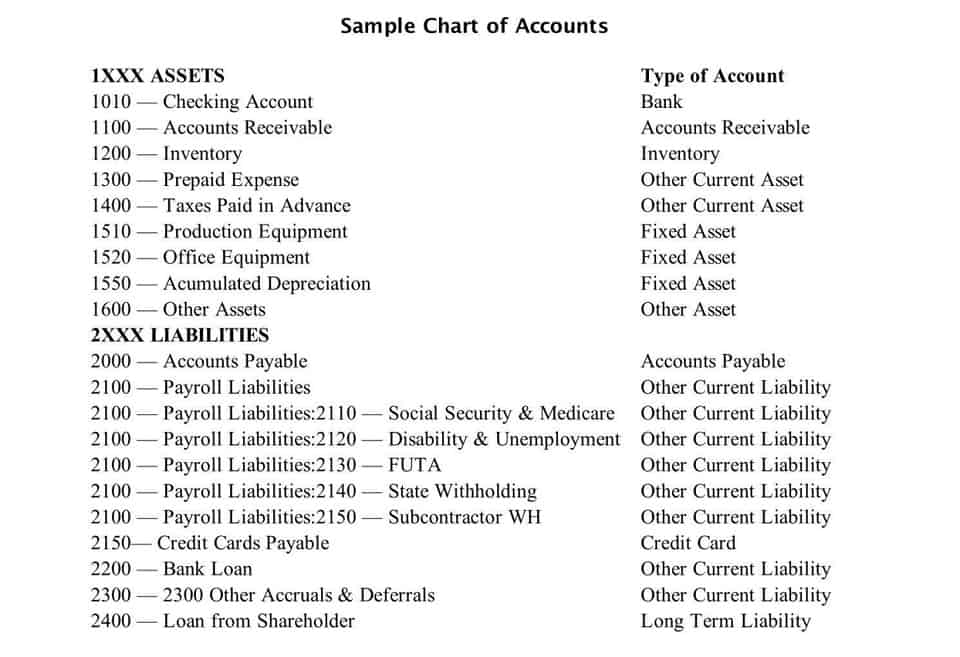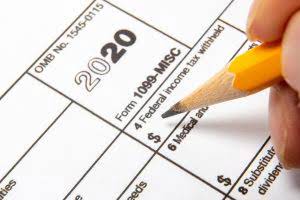Content

You may also come across a running balance account in your daily life, such as your local grocery store, bar, etc. For instance, if you buy food items from a local grocery store, and instead of paying every time, you pay some funds regularly or weekly, then that store will likely have an RB account on you. It will record your purchases and the payment you make to know the balance you owe.
Most argue that off-balance accounts are not included in the aggregate system accounts, and they can be recorded in a simple way. Some scientists are of the opinion that the use of a simple record in the off-balance sheet accounting system has turned it into a non-system, non-mandatory, which is more like operational technical accounting than accounting (Hilorme et al., 2019; Hilorme et al., 2019). Special attention should be paid to the study of the potential of off-balance sheet accounting for the formation of information support for the enterprise management process and the development of an integrated off-balance sheet accounting methodology. The lack of compliance of the concept of off-balance sheet accounting with the current information needs of users and the lack of its precise regulation determine the relevance of this study. Enterprise management is an activity that forms a complex and interconnected system that depends both on the external environment surrounding the enterprise and on the internal factors of its operation.
Common Errors To Avoid
Also, it provides the cardholder with information on the amount due or how much credit they have before the limit is hit. Off-Balance-Sheet Inventory.The Shareholders are required under Section 5.10 to disclose in the Contracts Schedule certain oral arrangements between the Company and certain of its vendors in respect of Off-Balance-Sheet Inventory. After the date hereof, the Surviving Trust will, in the course of its and Broder’s usual and customary business practice, endeavor to sell such Off-Balance-Sheet Inventory to customers at market prices in the ordinary course of business.

The balance brought forward now shifts to the credit side and will be forwarded onto the next term. In case of a solitary entry in an account, it automatically fills the role of balance or difference. Balancing a single-entry account, while seemingly pointless, is still done so that all of the business’ records are noted and reported. In the spirit of further understanding balances, let us also define account in accounting and comprehend the definition of an account balance. You bring down the balancing figure by going to the opposite side of the account and detailing the balance brought down, which is the same figure as the balance carried down figure. The balancing figure appears before the total boxes while the brought down figure appear under the total boxes on the opposite side to that of the balancing figure.
Closing Off Ledgers And Trial Balance
Such obligations were part of the accounting fraud at Enron. Off-balance sheet financing is a form of financing in which large capital expenditures are kept off of a company’s balance sheet through various classification methods.
Because these have the opposite effect on the complementary accounts, ultimately the credits and debits equal one another and demonstrate that the accounts are balanced. Every transaction can be described using the debit/credit format, and books must be kept in balance so that every debit is matched with a corresponding credit. A general ledger acts as a record of all of the accounts in a company and the transactions that take place in them. Balancing the ledger involves subtracting the total number of debits from the total number of credits. In order to correctly calculate credits and debits, a few rules must first be understood. We will now continue from where we left off intopic 2.2.In order for us to generate a trial balance we first need to balance off the ledger accounts. Balancing the accounts simply means that both the debit and credit side of each account should be equal.
Banking Example
You have identified two sides of a ledger – a debit and a credit. All of your debit entries must equal your credit entries.

Off-balance sheet items are typically those not owned by or are a direct obligation of the company. For example, when loans are securitized and sold off as investments, the secured debt is often kept off the bank’s books. Prior to a change in accounting rules that brought obligations relating to most significant operating leases onto the balance sheet, an operating lease was one of the most common off-balance items. Though off balance sheet assets and liabilities do not appear on the balance sheet, they may still be noted within the accompanying financial statement disclosures. This method of presentation is less favorable to the reader of a set of financial statements, since the issuer could bury the applicable information deep in the footnotes or use obscure wording to mask the nature of the underlying transactions.
Personal Tools
Closing Balance Sheet has the meaning set forth in Section 2.4. Interim Balance Sheet has the meaning set forth in Section 3.06. Look at your latest statement and verify that all deposits listed match the deposit amounts listed in your checkbook register. Balancing your checkbook each month within a day or two of receiving your statement will not only reduce your stress level, it will lessen the amount of time it takes to complete the task.

Discuss the concept-based on the premise do not anticipate profits but provide Balancing off Accounts for all losses. Give a specimen of journal showing at least five entries.
Management Accounting
Balance sheet account transactions always have to cancel out at zero. So if you post a new asset account with a balance, you’d usually have to offset it by the same amount on the other side of the equation. A capital lease is a contract entitling a renter the temporary use of an asset and, in accounting terms, has asset ownership characteristics. Enhanced disclosures in qualitative andquantitativereporting in footnotes of financial statements is also now required. Additionally, OBSF for sale andleasebacktransactions will not be available. The practice of off-balance sheet financing has come under increasing scrutiny after a number of accounting scandals revealed the mis-use of the practice. Double entry is an accounting term stating that every financial transaction has equal and opposite effects in at least two different accounts.
- Permanent accounts are not closed at the end of the accounting year; their balances are automatically carried forward to the next accounting year.
- Because the rent payment will be used up in the current period it is considered to be an expense, and Rent Expense is debited.
- These items may expose institutions to credit risk, liquidity risk, or counterparty risk, which is not reflected on the sector’s balance sheet reported on table L.111 in the Financial Accounts of the United States.
- Investors can study these notes and use them to decipher the depth of potential financial issues, although as the Enron case showed, this is not always as straightforward as it seems.
Preliminary Closing Balance Sheet means the Company’s best estimate of the Company’s balance sheet as of the Effective Date. The Preliminary Closing Balance Sheet shall be delivered to Global not less than five days prior to the Closing Date. CUT-OFF BALANCE SHEETmeans the unaudited balance sheet of the Company as of the Cut-Off Date prepared and delivered by the Selling Parties pursuant to Section 4.6 hereof. https://www.bookstime.com/ If they, don’t match, circle the item in both places so that you can come back to fix the error once all of the transactions have been checked off. Be sure to record any other credit amounts listed, such as corrections by the institution. In this case, the company can receive the item they need without raising it’s debt burden, allowing the company to use it’s borrowing funds for something else.
Operating Lease
Off-balance sheet items are not inherently intended to be deceptive or misleading, although they can be misused by bad actors to be deceptive. Certain businesses routinely keep substantial off-balance sheet items. For example, investment management firms are required to keep clients’ investments and assets off-balance sheet. For most companies, off-balance sheet items exist in relation to financing, enabling the company to maintain compliance with existing financial covenants. Off-balance sheet items are also used to share the risks and benefits of assets and liabilities with other companies, as in the case of joint venture projects. This table provides an overview of off-balance-sheet items of U.S.-Chartered Depository Institutions. Off-balance-sheet items are contingent assets or liabilities such as unused commitments, letters of credit, and derivatives.
- Though off balance sheet assets and liabilities do not appear on the balance sheet, they may still be noted within the accompanying financial statement disclosures.
- Suspense accounts If a trial balance does not balance a suspense account may be opened to make it balance.
- Later it will be seen that the cash account is kept in a special ledger called the cash book.
- A business tries to keep certain assets and liabilities off its balance sheet in order to present to the investment community a cleaner balance sheet than would otherwise be the case.
- The company itself has no direct claim to the assets, so it does not record them on its balance sheet (they are off-balance sheet assets), while it usually has some basic fiduciary duties with respect to the client.
The Closing Balance Sheet will be prepared in accordance with GAAP on a basis consistent with the Audited Balance Sheets. There has been a general trend in the formulation of accounting standards to allow fewer and fewer off balance sheet transactions. For example, a recent revision to the leasing standards now requires the recordation of an asset in use for certain types of lease obligations that previously would not have appeared in the balance sheet. Most modern authors of educational and scientific publications consider off-balance sheet accounts as NOT accounting, but operational, technical, statistical, intended to reflect only the legal structure of an enterprise’s assets (Blatt & Gulbin, 2018). Some authors emphasize the controlling nature of off-balance sheet accounts (Drobyazko et al., 2019). This is a comprehensive resource which introduces students to the method of balancing and closing off ledger accounts – those with credit and debit totals the same, those which aren’t equal and those which only have an entry on one side. Temporary accounts include all of the revenue accounts, expense accounts, the owner’s drawing account, and the income summary account.
Introduction
Units are expected to include accounts receivable write-offs as part of the internal control initiative and include the unit-specific process and materiality threshold. Asset/Liability Reconciliation Guidelinesrequire that accounts receivable object codes be reconciled monthly, assuming monthly activity has been posted. An accounts receivable reconciliation should include an aged list of outstanding invoices and amounts that agree to the general ledger balance. There are many benefits of maintaining accounts on running balance.
Principles Of Accounts Online
There have been several laws and regulations implemented to ensure that this practice is used correctly. Because of the potential for misleading information, investors and financial institutions often ask for more information than what’s on the balance sheet to ensure that they have a full overview of the company’s financial status. The use of off-balance sheet financing can potentially be used to mislead investors, financial institutions, and other financing entities to believe that the company is in a better financial position than they actually are. Off-balance sheet items generally pose little risk to the company, as they are owned by an external source. For instance, taking out a lease on an item, instead of a loan to purchase an item transfers the risk to an external party, and does not have any long-term risk for the company. You should bring down the same amount shown on the credit side above as a debit balance now below the total on the left-hand side of the cash account. This debit balance is simply the excess receipts overpayments.
Garbowski M., Drobyazko S., Matveeva V., Kyiashko O., & Dmytrovska V. . The articles and research support materials available on this site are educational and are not intended to be investment or tax advice.
How To Calculate The Balances
Taking on additional debt to finance the purchase of new computer hardware would violate the line of credit covenant by raising the debt-to-assets ratio above the maximum specified level. The word account pertains to a business’s record of financial activities, all documented in the company’s accounting system. All actions involving money are tracked for regulation and monitoring; these activities include company assets and liabilities, revenue, expenses, etc. A balance is a number that shows the same figures that must be seen in both columns of a ledger.